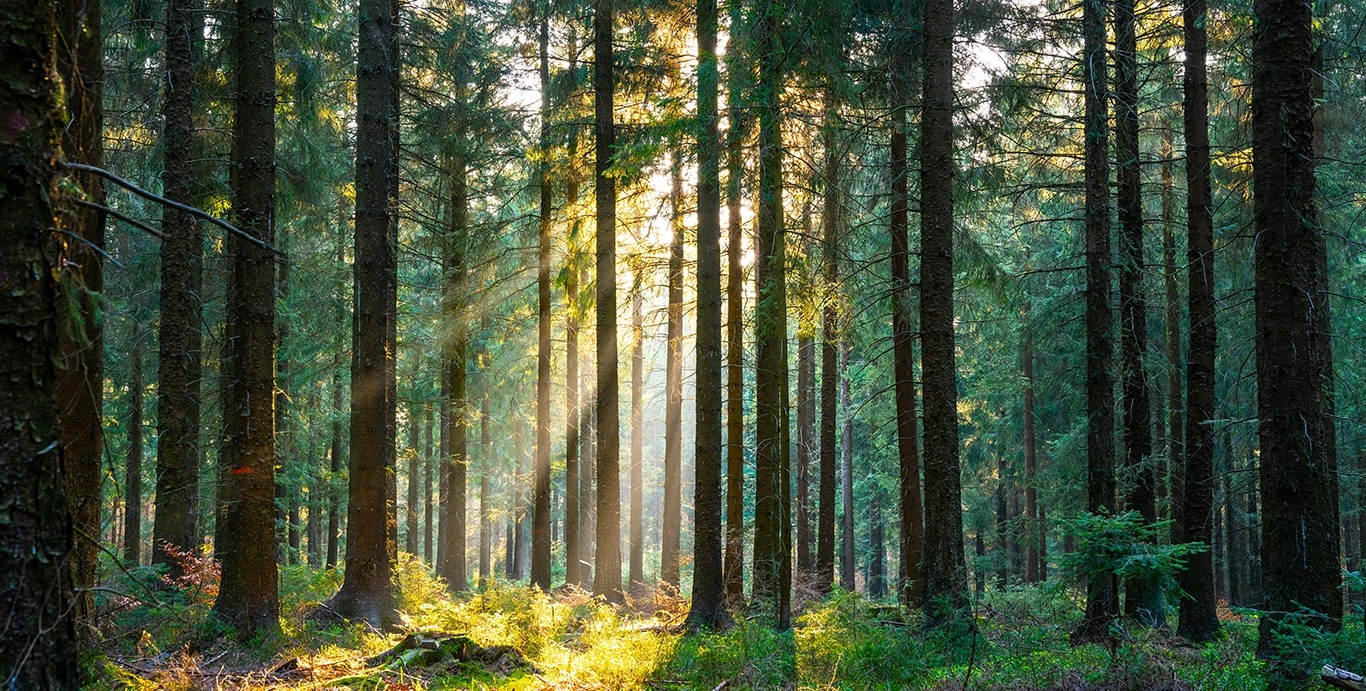Pests That Threaten Pine Stands
Publish Date: May 1, 2023
Estimated Time:
Several pests in Mississippi and other southern states threaten pine stands. Continue reading to learn how to identify signs of affected trees and minimize the loss of your pine stand.
What Pests Could Affect My Pine Stand?
Southern Pine Beetle – These little insects are one of the most destructive pests to pine stands throughout Mississippi. They are also the most common. Since the 1960s, Southern Pine Beetles have caused billions of dollars in damages to pine stands.
Engraver Beetle – Engraver Beetle infestation exhibits several external signs in standing trees. Fading tops of large trees or the entire crowns in small trees are tell-tale signs that Engraver Beetles have been present.
Additionally, accumulations of boring dust in bark crevices and at the base of the tree may indicate an infestation and pitch tubes on the trunk. Looking closely, you may even see characteristic egg galleries slightly engraving the sapwood – hence the common name, engraver beetle. Look for boring dust and galleries in slash to identify an Engraver Beetle infestation.
Redbay Ambrosia Beetle – The Redbay Ambrosia Beetle is a destructive pest that has been wreaking havoc on trees in the southeastern United States. This small beetle carries a fungus called Ophiostoma, which causes tree wilt and discoloration of foliage.
Trees infected with this fungus will eventually turn brown, and the leaves will remain on the branches. Signs of infestation include sawdust-like strings around the point of attack and stained sapwood visible upon removal of bark or in cross-sections of the stem.
Unfortunately, there are currently no tested or proven treatments for managing the Redbay Ambrosia Beetle and its associated fungus. To reduce its spread, it is important to not transport wood or chips from infested trees out of the local area. It is also important to be aware of signs of infestation so that you can take steps to protect your own trees from becoming infected.
How to Know if My Pine Stand is Affected by Pests?
If you know what you’re looking for, you can identify visual signs of pests affecting your pine stands.
- Clusters of Dead Trees – Everything has a lifecycle and trees are no different. So, a dead tree here and there is rarely cause for concern. However, a cluster of dead trees in a relatively small area is typically a dead giveaway that an external force is to blame.
- Missing Bark – More often than not, bark will be missing from areas where pests have been feeding or burrowing into a trunk or branch.
- Needle Discoloration – If there are random patches of dead-looking needles on your trees, it’s likely pests have taken control of that area.
- Crown Thinning – If the crowns of your trees begin looking patchy during months when they should be thriving, it’s possible bugs have infested those trees.
- Thinning of Needles, all over smaller trees, can mean that the tree has been infested by insects, mold, or fungi.
How to Minimize Pest Damage to My Pine Stands
While no method will completely eliminate pests damaging your pine stands, there are ways to minimize the damage they cause.
- Diversify Your Timber Stand – Most parasitic, tree-loving pests prefer specific species of trees, and it’s unlikely multiple outbreaks of pests happen at the same time. For this reason, you should diversify the trees on your land. Doing so will minimize the risk that all of your trees simultaneously undergo an attack.
- Regularly Walk Your Property – Early detection of a pest invasion is a very effective way to mitigate damage to your pine stand.
- Thin Trees – Managing tree density is an effective way of limiting the number of trees that pests will affect. The denser your timber stand is, the more trees pests will threaten.
- Take Preventative Measures – Avoid transporting wood from infested areas, which means being aware of the signs of various infections and infestations.
Pests, such as borers and bark beetles, can wreak havoc on pine stands if left unchecked. These pests are hazardous because they can quickly spread their infestation to adjacent trees and their numbers can grow exponentially quickly. Therefore, it is essential to actively monitor your forest for signs of infestation before it takes over. Early detection is vital to curbing the spread of these destructive insects and preventing large-scale damage to your pine stand.
Land and Timber Management and Purchases in Arkansas, Mississippi, & Louisiana
By diligently checking your forest regularly and paying attention to warning signs of an infestation, you can catch any pest activity early on before it gets out of control. This will help protect your harvest from being damaged or ruined by pests, maintaining the health of your forest and allowing you to continue harvesting healthy pine products from your land.
Do you want to sell your pine stand in Arkansas, Mississippi, or Louisiana? Pick from one the 150+ we serve to find a licensed forester in your area.

